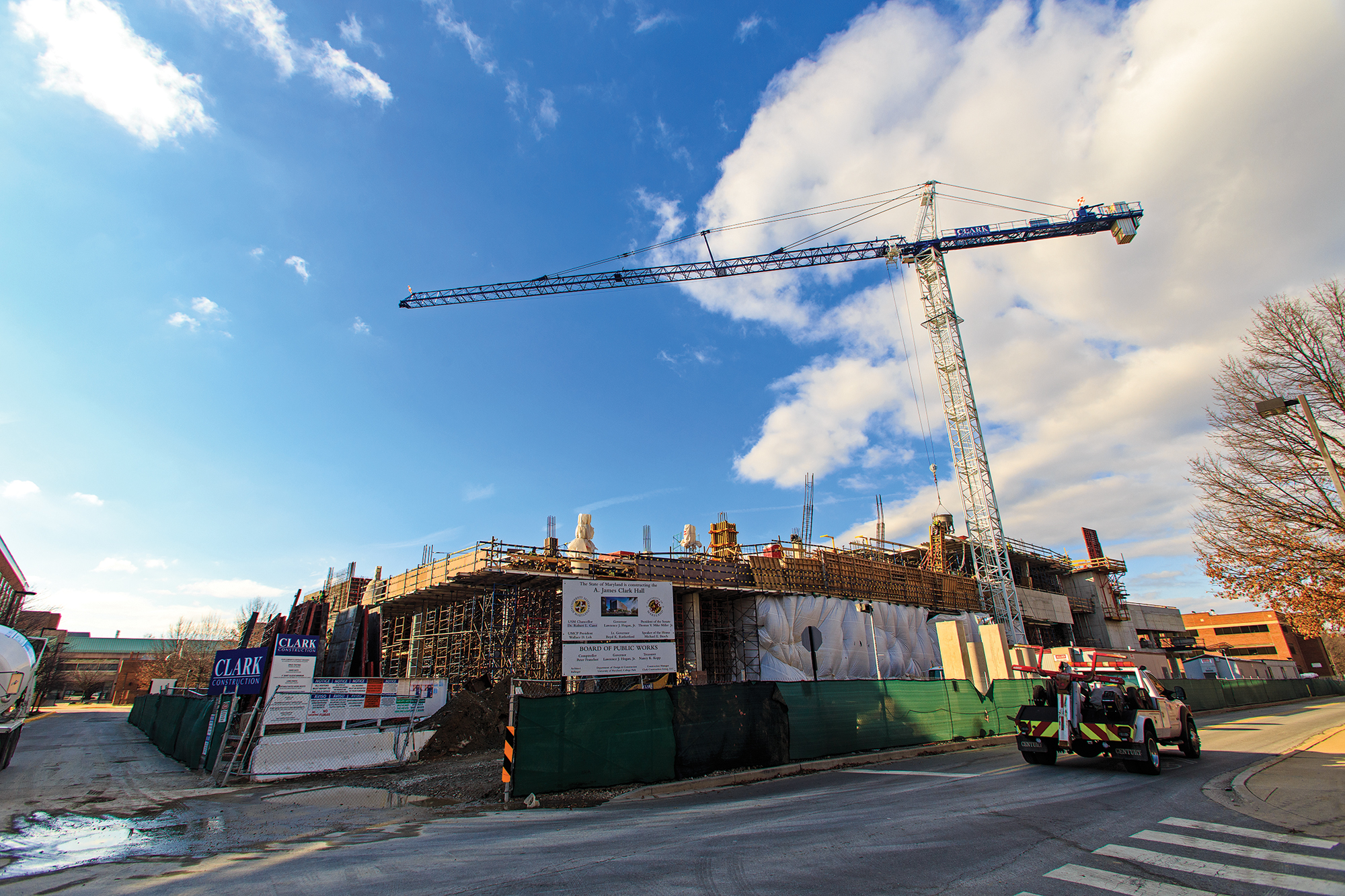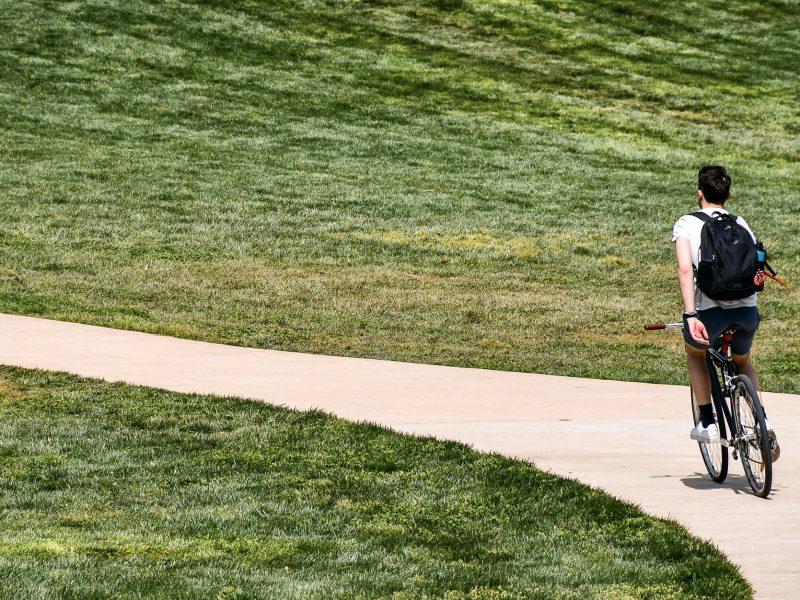Edward St. John Learning and Teaching Center and A. James Clark Hall will be LEED certified when they are completed and are awaiting approval from the state on the design plans, said Martha Shrader, sustainability manager for design and construction.
The University of Maryland complies with a LEED Silver building standard for new construction projects and major renovations on the campus. To be rated as LEED Silver, a building has to be U.S. Green Building Council-approved based on ratings in categories such as the construction site sustainability, water efficiency, resources used and indoor environment quality of the completed building, according to the council checklist.
This university’s two largest construction projects will have open space around them as well as reflective sidewalks that won’t absorb heat, helping to keep everything cool in the summer, Shrader said. The St. John Center will have a green roof, and Clark Hall will have reflective ceilings similar to the reflective sidewalks.
Water-efficient landscaping, low-flow fixtures to reduce use of water and low chemical-admitting materials such as adhesive paints and carpets will also be in each building, she said, noting, “The goal right now is to have at least 20 percent of recycled and regional materials in each building.”
Clark Hall’s energy performance hasn’t been reviewed yet, Shrader said, but it is anticipated to be about a 30 percent reduction in energy usage overall.
“I am looking forward to the day when LEED will no longer be needed, when green building will be standard practice,” she said. “Until that time, it’s good to have those goals in place to keep moving things forward.”
The LEED Silver standard for new campus buildings has been in place since 2008, when former Gov. Martin O’Malley signed the High Performance Buildings Act into law, said Bill Olen, capital projects director. The act requires buildings constructed with state funds to be high performance buildings with at least a LEED Silver rating, Olen said.
Before construction of a new building on the campus, a project design has to be submitted for review to the national building council, and when construction is complete, documents are also submitted, Olen said. It takes about a year from when the building is first occupied for LEED status to be obtained, he added.
There are exceptions to the law, Olen noted, including storage buildings, garages and warehouses.
Before the law passed in 2008, there were no LEED buildings on the campus, he said. Currently, there are eight LEED Silver-certified buildings on the campus, according to the 2015 Sustainability Progress report. Such buildings include 251 North with its green roof, the Shuttle-UM building with its 100 percent vegetative roof for stormwater management, four different sorority houses and South Campus Commons — not including Commons 7, which is gold certified.
Although only silver status is required by the state, this university has a number of gold-status buildings as well.
Commons 7 was the first student housing to be gold certified, and Knight Hall was the first nonresidential building to be gold certified, according to the sustainability website. Both buildings opened their doors to the public in 2010.
For Knight Hall, 97 percent of the waste generated from construction was recycled and 34 percent of the building materials used were from recycled sources; for Commons 7, high-efficiency heat pumps and energy-efficient appliances are in each residential unit, according to the sustainability website.
The Pocomoke Building, Oakland Hall, he University House, the Physical Sciences Complex and Chincoteague Hall are all also LEED Gold certified.
“New buildings increase the energy consumption on-campus, but the fact that we are making new buildings sustainable and energy efficient is definitely helping to curb that impact,” said Sally DeLeon, an Office of Sustainability project manager.
Because of the new LEED-certified buildings, the campus diverted 89 percent of solid waste from landfills in 2014, according to the 2015 Sustainable Progress Report. That number was 57 percent in 2009, DeLeon said.
“It is very important and a really great step to make sure we are following through with being a sustainable campus,” said Andrew Muir, sustainability office spokesman. “It will also help in the Climate Action Plan for being carbon-neutral by 2050.”



